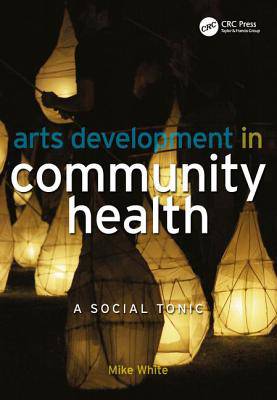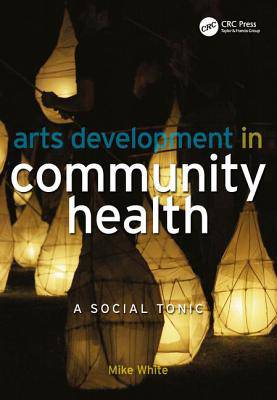
- Retrait gratuit dans votre magasin Club
- 7.000.000 titres dans notre catalogue
- Payer en toute sécurité
- Toujours un magasin près de chez vous
- Retrait gratuit dans votre magasin Club
- 7.000.0000 titres dans notre catalogue
- Payer en toute sécurité
- Toujours un magasin près de chez vous
Arts Development in Community Health
A Social Tonic
Mike White, Edmund Hillary
Livre broché | Anglais
51,45 €
+ 102 points
Format
Description
Arts in community health is a distinct area of activity that is characterised by the use of participatory arts to promote health. Based on the latest international research, this book considers how and why arts in community health has come about, the characteristics of its practice and the challenges it poses for evaluation. The rapid growth of this field of work in the UK from the mid-1990s has begun to impact on policy in the arts funding system, on multi-sector partnerships for health service delivery, and in local authority cultural strategies, yet the reasons for its emergence and the nature and diversity of the practice itself have gone largely unaccounted for. It encompasses work in primary care, community health and public health. Arts in community health has not evolved simply as a result of the successful advocacy of an arts sector keen to demonstrate its relevance to health, but rather through the wider recognition of a phenomenological connection between engagement in cultural activity and well-being. The pioneering viewpoints in this book promote an holistic approach to arts and public health, focusing on the development of the person and not just the sick or dysfunctional part of that person. Alongside the therapeutic benefits to patients, the book also considers environmental improvements to support staff, and using the arts to produce more creative kinds of health information. This fully referenced guide compares and contrasts the arts in different cultures and healthcare systems, how well it works, why it works, and the factors that determine its success. The case studies examined prove shared creativity aids public health and simultaneously identifies and addresses the local and specific health needs in a community. 'In the last decade health has become a recurrent topic in discussion of the role of the arts in society, fuelled by a growing body of research into connections between culture and well-being. This pioneering practice of arts in community health - began in the UK in the late 1980s through sporadic pilot projects placing local arts development in health promotion and primary care contexts. It has since grown and expanded to embrace community health on a broad front hooking up with multi-agency initiatives to address the social determinants of health through partnership working.' Mike White, in the Introduction
Spécifications
Parties prenantes
- Auteur(s) :
- Editeur:
Contenu
- Nombre de pages :
- 262
- Langue:
- Anglais
Caractéristiques
- EAN:
- 9781846191404
- Date de parution :
- 25-03-09
- Format:
- Livre broché
- Format numérique:
- Trade paperback (VS)
- Dimensions :
- 170 mm x 244 mm
- Poids :
- 612 g

Les avis
Nous publions uniquement les avis qui respectent les conditions requises. Consultez nos conditions pour les avis.






